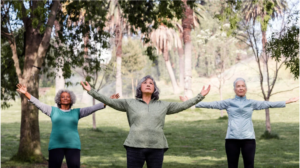Gaslighting is a form of emotional abuse that makes a person question the validity of their experiences, feelings, and beliefs. When this manipulation is used to undermine or minimize someone’s experiences of racism, it is called racial gaslighting. Unfortunately, racial gaslighting is prevalent, particularly affecting People of Color. It can happen intentionally or unintentionally, but it can still lead to mental and emotional harm. Identifying it when it happens can help you handle it more effectively. Here are some examples of racial gaslighting and what to do about it.
Racial gaslighting occurs in various contexts, such as school, the workplace, with friends and loved ones, law enforcement, and society at large. For instance, a teacher who tries to undermine the ongoing impact of racism by saying something like, “Yes, slavery happened, but that’s in the past” is an example of racial gaslighting. In the workplace, when a colleague repeatedly calls two Asian American employees by each other’s names and then responds by saying, “I don’t mean to be rude. It’s just because they look so much alike, you know?” it’s an indirect or subtle discriminatory slight against members of a marginalized group. Racial gaslighting can also show up in friendships when a friend says things like, “I don’t see color.” This attitude minimizes and dismisses the racism, discrimination, and microaggressions People of Color face regularly.
In society at large, racial gaslighting occurs when officials initially claimed George Floyd’s death was an accident, contradicting what we had watched on video footage. The “All Lives Matter” movement is another example of racial gaslighting as it dismisses the issue of racism. Recognizing racial gaslighting when it happens is essential, and confronting it directly is critical to preventing further harm.



